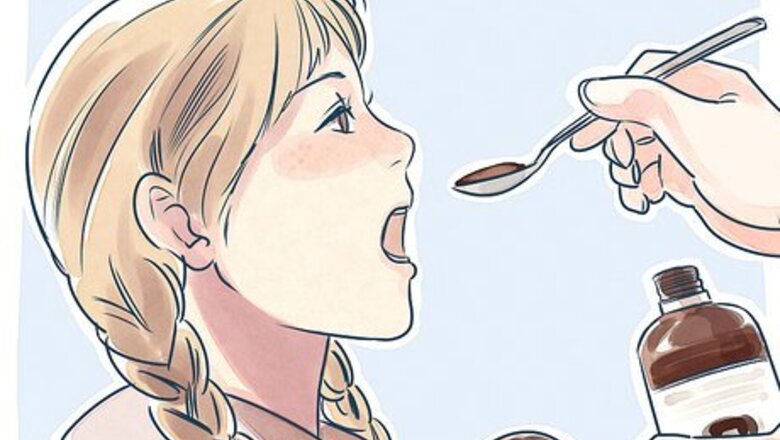
views
Managing Your Child’s Pain
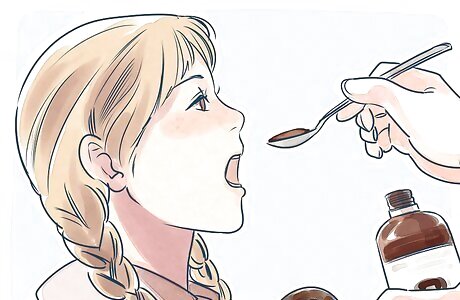
Give your child their prescribed medication on time. It is very important to be sure that your child receives any prescription or over the counter pain medications according to the doctor’s orders. Even if your child does not indicate that they are in pain, the parent needs to be sure that they get their medication on time. The reason for this is the fact that the pain medication is supposed to keep the child comfortable so it needs to be taken before they are feeling pain. Since the medication takes some time to get into the child’s system, if the parent waits to administer the medication until after the child is feeling some pain, it could become unbearable by the time the medication becomes active. To be sure that the medication is available when the child needs it, the parent should pick up any prescriptions on the way home or have someone else do it right away. Over the counter medications should also be on hand when the child is brought home so that they do not have to wait to receive a dose.
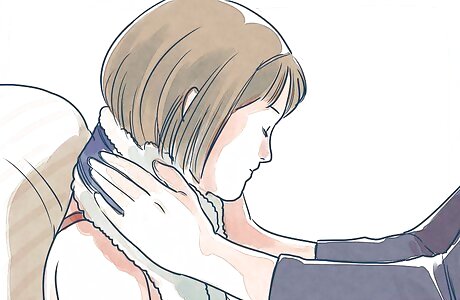
Use a cold compress to relieve your child’s pain in the first 48 hours after surgery. While the medication your doctor prescribes should help to manage most of your child’s pain, laying a cold compress on the area where your child feels the most pain may help to make your child that much more comfortable. The cold temperature slows the blood flow to the area, which can decrease the pain and swelling. To apply a cold compress: Wrap an ice pack, cold compress, or bag of frozen vegetables in a washcloth or hand towel. You should not lay the cold item directly against your child’s skin, as it could actually burn the skin. Keep the compress on the area for 20 minutes. Let the skin warm back up for 10 minutes, and then re-apply the compress for another 20 minutes if your child is still feeling pain in the area. After 48 hours, switch to a warm compress, as described in the next step.
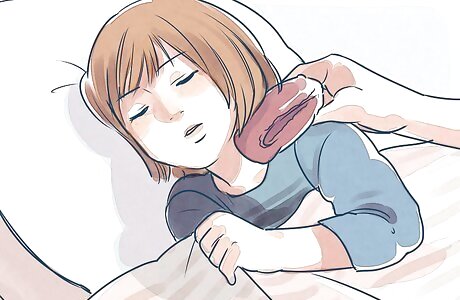
Use a heated compress 48 hours after the surgery. After 48 hours, you can begin to use a heated compress to make your child more comfortable. At this stage, the painful areas needs oxygen and nutrients in order to heal. Heat can open up the blood vessels in the area, making it easier for oxygen and nutrients to get to the healing area. You can administer heat in a couple of ways. Let your child soak in a warm bath for 20 to 30 minutes. Use a warm compress or gel pack that you warm up in the microwave. However, make sure that you wrap the compress in a washcloth so that the heat is not applied directly to your child’s skin.

Call your doctor if the pain medication does not seem to be working. If your child complains about unbearable pain for an extended period of time, you should call your doctor. It may be possible to have the dosage adjusted, or to get a stronger medication.
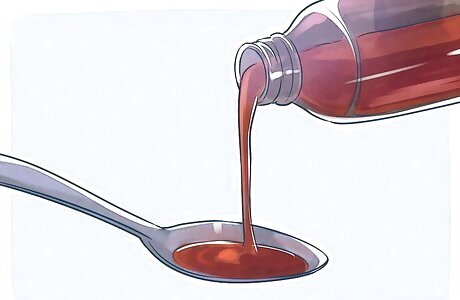
Give your child antibiotics if your doctor prescribes them. To ward off infections, your child will most likely be prescribed antibiotics. Make sure that your child takes their medication every day; one missed day of antibiotics could mean that they could become prone to infection.
Using Alternatives to Talking

Consider a family-wide silence to help keep your child from talking. In order for your child’s throat to heal, it is usually recommended that they refrain from speaking for a number of days. This can be quite difficult for a child. Sometimes this is easier if the entire household refrains from speaking for the same period of time, at least when in front of your recovering child.

Give your child a bell to ring if they need something. Because your child needs to rest their throat, you can consider giving your child another way to get your attention. This could be through the use of a: Bell. Bicycle horn. Xylophone. Whatever item you choose, make sure that it is not very disruptive, as it will no doubt be ringing throughout the house.
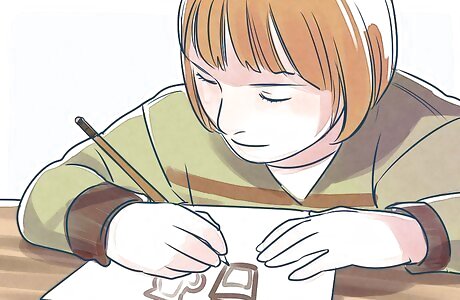
Have your child write down requests if they old enough. If your child is old enough to be able to write, then consider giving them a pad of paper and a pencil. That way they can write down whatever they may need. If available, you could also give your child an electronic tablet to write down their needs. If your child can’t write, you can purchase picture cards that they could use to indicate common needs like needing food, water, or a hug. You could also come up with hand signals to indicate certain needs, like having your child rub their tummy if they are hungry.
Helping Your Child to Get Rest
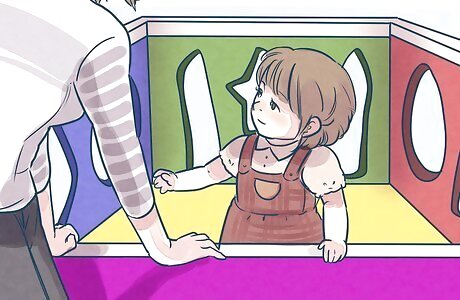
Put your toddler in a playpen if they refuse to stay in bed. Once home, your child will need to rest so that they can make a speedy recovery. If your child is a toddler, there is a good chance that they will want to get out of bed and play. If you can’t keep them in bed, set up a playpen so that they remain in a confined space and can’t exert themselves too much. Place some of their toys in the playpen with your child.

Instruct older children to stay in their bed. If your child is a little older, it will be easier to explain to your child why they need to stay in bed. Tell them that while they sit in bed, their body will start to fix itself. When they lie down, make sure that their head is propped up with two or three pillows so that it is higher than their legs; this will help to keep their neck from swelling. You will most likely have to keep your child in bed for about a week. If your child’s neck does begin to swell, put a cold compress on it to bring down the swelling.

Purchase activities that your child can do in their bed to keep them from getting stir crazy. Recuperation time can seem boring to some children, especially those that are usually quite active in their play. Combat this boredom by buying activities that your child can do while they lie in bed. Some activities include: Reading a new book. You can also read to your child. Playing on a tablet or handheld device. Drawing or coloring (you will have to put a hard surface down on your child’s lap so that they can draw). Watching a movie or favorite TV show.
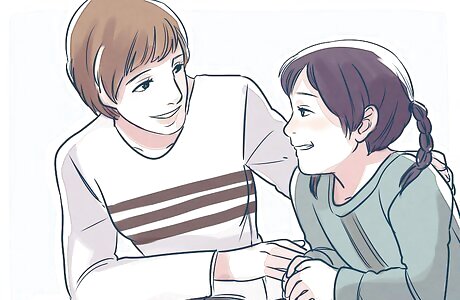
Limit the number of people who visit your child. When your child is at home recovering, try to limit the number of people who come over to say hi. Your child’s immune system will be a little weak because of the trauma they have just experienced. If a lot of different people come over to say hi, your child’s chances of becoming exposed to a bacteria or virus is more likely. In addition, having visitors can make your child so excited that they talk or moves around, which could reopen wounds in their throat.

Alert your child’s teacher(s) to their surgery. While your child’s teachers most likely already know that your child is missing school because of surgery, it is important to remind them of this fact when your child goes back to school. For the first couple of days back, your child’s teachers may want to keep an eye on their and make sure that they adjust to being back at school and does not exert themselves too much.
Managing Your Child’s Eating and Drinking

Give your child plenty of liquids. In order to help your child’s throat heal, it needs to be kept moist. At first, your child may not want to eat or drink anything because it is uncomfortable to do so, but it is important that they at least take some water. If they will not drink water, you could ask your child to suck on some ice. Give them small pieces of ice so that they do not have to open their mouth too wide to suck on them.
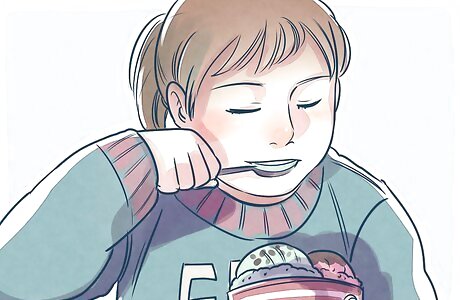
Stick to the list of foods your child’s doctor gives you. Your child’s doctor will most likely give you a list of foods and drinks that you should give your child while they recover. In particular, you can give your child cold foods, like ice cream, sorbet, or Italian ice. These cold treats actually help to numb your child’s throat, and will most likely make your child a much happier camper. Other foods include clear liquids and brother. Fruit juice. Jello and pudding. Most children tend to avoid acidic or salty foods, like tomato bisque, after surgery because they irritate the throat, but if your child seems to be ok with these items, they are safe to feed them.

Give your child soft foods about a week after their surgery. You can begin giving your child soft foods when they feel they are ready. Give them a small amount and see if it causes them any pain; if it does, stick to the foods mentioned in the previous step for a couple more days. Soft foods include: Regular soups like chicken noodle (however, you can also puree these soups to make them creamy). Serve soups lukewarm, or even room temperature, to make sure that they do not irritate your child’s throat. Applesauce. Pudding.
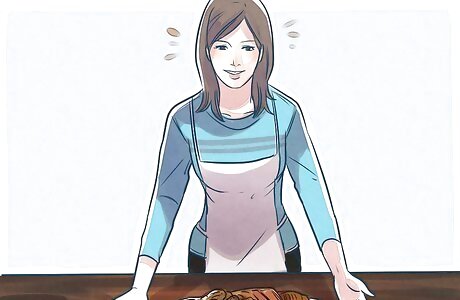
Be aware that your child’s diet can gradually return to normal over the two week recovery period. Your child will most likely take two weeks to return to a normal diet. During this time, and for a couple days after the two weeks are up, avoid giving them any crunchy or rough food, as these types of foods could cause pain.
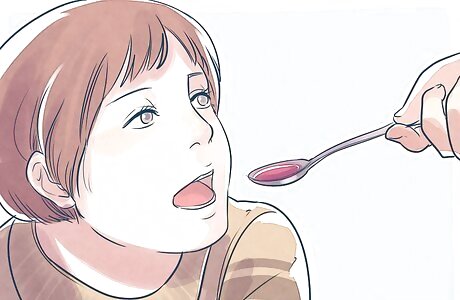
Keep your child’s medication in mind. It is a good idea to plan meals so that they are served 30 to 60 minutes after your child takes a dose of medication. This will give the medication time to get into your child’s system, so that they feel less pain when they swallow their food.












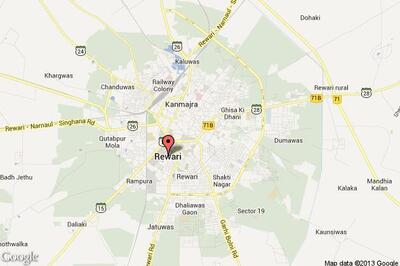






Comments
0 comment